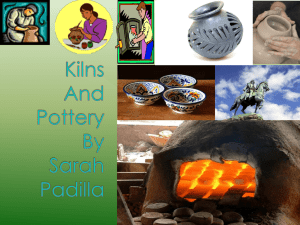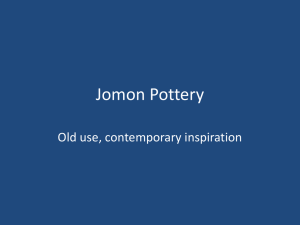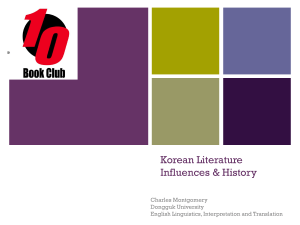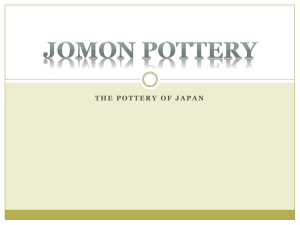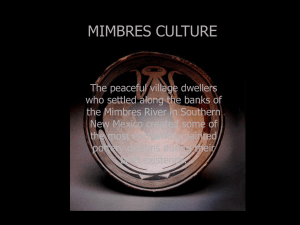Greek Krater Korean Cloud Dragon Jar
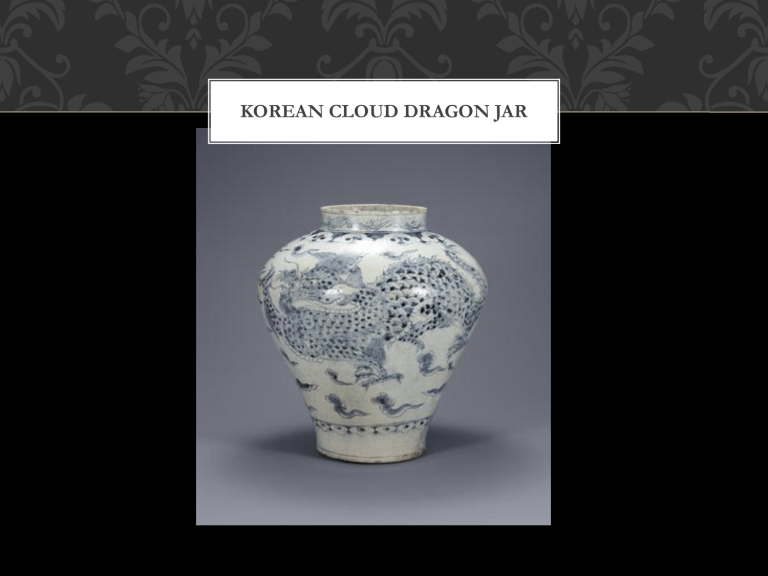
KOREAN CLOUD DRAGON JAR
GREEK KRATER
KOREAN CLOUD DRAGON JAR
A. 18
th
– 19
th
century Korean
T. Cloud Dragon Jar
D. 18
th
– 19
th
century
M. Porcelain with cobalt underglaze
GREEK KRATER
A. 4
th
century Greek
T. Krater
D. 4
th
century
M. Terracotta Vase
KOREAN CLOUD
DRAGON JAR
KOREAN CLOUD DRAGON JAR
• General Information:
• Made during the Joseon dynasty, which took on the
Confucian teachings as a general code of conduct
• The porcelain, made with pure white clay, was believed to represent the Confucian ideals of restraint and honor as well as frugality and pragmatism
• The dragon represented the king’s great power and good will
GENERAL INFO
CONT.
• Cont.
• The dragon jars were designed to show the dignity and authority of the royal house
BLUE AND WHITE
PORCELAIN
• White pottery and porcelain were decorated under the glaze with a blue pigment, generally cobalt oxide
• The decoration is commonly applied by hand, by stenciling or by transfer-printing, though other methods of application have also been used.
• The technique of cobalt blue decorations seems to have come from the Middle-East in the 9th century through decorative experimentation on white ware
PORCELAIN
CONTINUED
Cont.
• The blue-and-white technique was fully developed in
China with porcelain technology in the 14th century.
• White porcelains were preferred and praised than any other porcelains during the time to represent Korean
Confucian ethics such as frugality and pragmatism
PORCELAIN
CONTINUED
• Cont.
• Joseon white porcelains are characterized by the beauty of unpretentious forms, understated decoration, and subtle use of color, reflecting the ideals of Korean
Confucian state.
• White porcelain was being produced in the Korean peninsula during the Koryo dynasty (918-1392)
PORCELAIN
• Cont
• Confucianism became the political and cultural driving force of the Joseon dynasty
• It is possible that white porcelain was favored at this time, as its purity of color could be associated with the Confucian virtues of humility and simplicity
EASTERN DRAGONS
• Korean dragons are legendary creatures in Korean mythology and folklore.
• The style of the dragon was heavily influenced by the Chinese dragon.
• Korean dragons have unique culture-specific properties that differentiate them from dragons in other cultures
EASTERN DRAGONS
• Cont.
• The symbol of the dragon has been used extensively, both in Korean mythology and ancient Korean art.
• In the early Joseon period (1392-1910) the dragon motif was used exclusively by the royal family
GREEK
KRATER
GREEK KRATER
• General Information
• Essentially a punch bowl, the Krater was used to hold wine and water at feasts or special events
• Kraters were glazed on the interior to make the surface of the clay more suitable for holding water, and possibly for aesthetic reasons, since the interior could easily be seen.
• Made out of a mixture fired clay and water, which formed terracotta
• The process used to make Kraters as well as most Greek pottery
GENERAL INFO CONT.
Cont.
• Greek vases were made of terra-cotta. Black-figure artists painted the figures in black silhouettes with a slip made of clay and water
• Details were added with a sharp tool by incising lines through the painted surface and exposing the orange clay below.
• The vase was then fire(baked in a kiln) in three stages
GENERAL INFO CONT.
Cont.
• The final result was an oxidization process that turned the surface of the vase reddish-orange and the painted areas black
GREEK POTTERY
• The clay needed is first dug out of the ground it is full of rocks and shells and other stuff that needs to be removed
• the potter mixes the clay with water and lets all the impurities sink to the bottom.
• The clay is then shaped on a wheel
• paints it with a very pure black slip (made from the same clay) and a brush.
GREEK POTTERY CONTINUED
• Cont.
• Greek pottery, unlike today's pottery, was only fired once, but that firing had three stages.
• the kiln is heated up up to around 800 ° C with all the vents on the sides open to let air in. This turns the pottery and the paint red all over
• the temperature is raised to 950 ° C and then allowed to drop back to 900 ° C. his turns the pottery and the paint all black.
GREEK POTTERY CONTINUED
Cont.
• the third and final phase is started by opening the vents and allowing the kiln to cool all the way down. This last phase leaves the slip black but turns the pottery back to red
COMPARISON
• Comparing the two pieces we see a contrast between the light and dark styles of the two different cultures
• The Greek Krater depicts a scene of a man and a woman, scenes were traditional depictions of Greek
Pottery
• The Korean piece has a more significant meaning, to represent the Confucian ideals of restraint and honor as well as frugality and pragmatism
• The dragon represented the king’s great power and good will
COMPARISON CONTINUED
Cont
• The Krater represents Western styles of pottery and the Dragon Jar represent the Eastern vonventions of pottery
• The Dragon Jar had a more ornamental purpose while the Krater was utilized for wine dilution making it more practical
BIBLIOGRAPHY
•Adams, Laurie. A History of Western Art. Boston: McGraw-Hill, 2008. Print.
•"Ancient Greek Pottery." Ancient Greek Statues, Pottery, Armour, Jewelry & Orthodox Icons at Hellenic-Art.com.
Web. 18 Nov. 2011. <http:// www.hellenic-art.com
/pottery/potteryinfo.htm>.
•"Blue and White Porcelain." Wikipedia, the Free Encyclopedia. Web. 18 Nov. 2011.
<http:// en.wikipedia.org
/wiki/Blue_and_white_porcelain>.
•"Joseon White Porcelain." Wikipedia, the Free Encyclopedia. Web. 18 Nov. 2011.
<http:// en.wikipedia.org
/wiki/Joseon_white_porcelain>.
•"Korean Pottery and Porcelain." Wikipedia, the Free Encyclopedia. Web. 18 Nov. 2011.
<http:// en.wikipedia.org
/wiki/Korean_pottery_and_porcelain>.
•"Krater." Wikipedia, the Free Encyclopedia. Web. 18 Nov. 2011. <http:// en.wikipedia.org
/wiki/Krater>.
•"MFAH | Collections | Arts of Asia | Cloud-Dragon Jar." MFAH | The Museum of Fine Arts, Houston. Web.
18 Nov. 2011. <http:// www.mfah.org
/art/detail/korean-dragon-jar/>.
•"Pottery of Ancient Greece." Wikipedia, the Free Encyclopedia. Web. 18 Nov. 2011.
<http:// en.wikipedia.org
/wiki/Pottery_of_ancient_Greece>.
http://en.wikipedia.org/wiki/Korean_dragon http://www.britishmuseum.org/explore/highlights/highlight_objects/asia/p/porcelain_storage_jar.aspx
